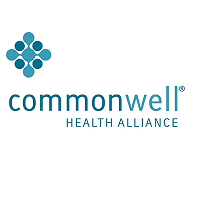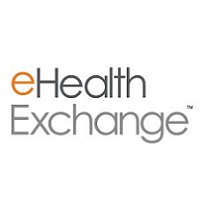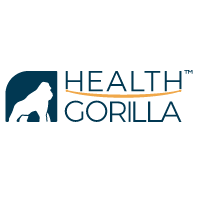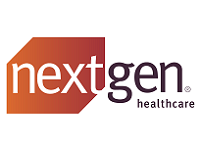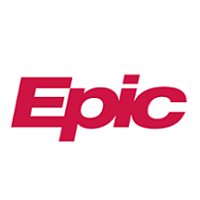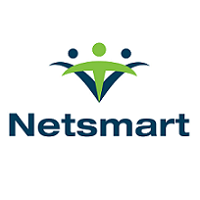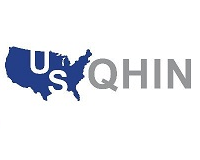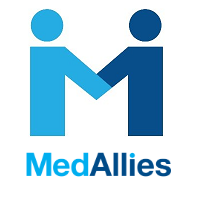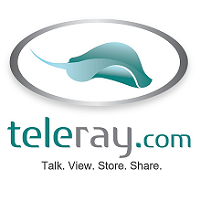We have now past the 18 year mark in our quest for healthcare interoperability. Under an executive order from president G W Bush, the ONC was established and Dr. David Brailer was dubbed “America’s first Health Information Czar.” The Meaningful Use program was then born out of the HITECH Act and Merit-Based Incentive Payment System was then born our of the MACRA legislation. And then information sharing from the CURES Act. And now the release of Trusted Exchange Framework and the Common Agreement (TEFCA). All trying to move our healthcare system to the digital age, better outcomes, controlling and reducing costs, and patient access to their health data. It has not been an easy road and the debate of the journey will never end.
TEFCA News
The Sequoia Project Opens QHIN Application – On October 3, 2022 The Sequoia Project opened the Qualified Heath Information Network (QHIN) Application. Prospective QHIN organizations, who have submitted their intent to apply as instructed in the QHIN Onboarding & Designation SOP, will receive a required submission identification number to begin and submit their application online. The intent to apply is the initial step in the application, onboarding, and designation process, and does not indicate submission of the QHIN Application.
Netsmart Announces Intent to Become a Qualified Health Information Network to Drive the Evolution of Interoperability – Netsmart (@Netsmarttech), the developer of CareFabric® platform for human services, post-acute care providers and payers, announced its intent to apply to join the Trusted Exchange Framework and Common Agreement (TEFCA) to become a Qualified Health Information Network (QHIN). By supporting TEFCA, Netsmart continues its decade-long advancement of interoperability strategies to facilitate an open exchange of longitudinal healthcare data that will benefit individuals receiving care across the healthcare ecosystem.
TeleRay Technologies to Join the Trusted Exchange Framework (TEFCA) – TeleRay has announced its plan to join the Trusted Exchange Framework and Common Agreement (TEFCA) by applying to become a Qualified Health Information Networks. TeleRay CEO Timothy Kelley understood from the beginning of the TEFCA process, the company would become one of the many QHINs (Qualified Health Information Network) as a primary leader in the field.
The Sequoia Project Solicits Feedback for TEFCA Facilitated FHIR Implementation Guide – Review and Submit Feedback Until November 7th. Stakeholders are encouraged to review the draft document and submit feedback via the RCE website now through November 7, 2022. All stakeholder feedback will be thoughtfully considered as the RCE develops and publishes the final TEFCA Facilitated FHIR Implementation Guide Version 1.
RCE Monthly Informational Call
Tuesday, October 17 | 12:00 p.m. – 1:00 p.m. ET
The Recognized Coordinating Entity (RCE) hosts a public informational call as an opportunity to share information about the progress to-date on the third Tuesday of each month. View previous calls.
Register Here
Our TEFCA Playlist
Hear what HIE industry leader say about TEFCA.
Spotlight on Community Networks
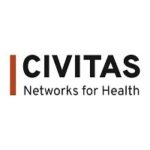 The Network for Regional Healthcare Improvement (NRHI) and the Strategic Health Information Exchange Collaborative (SHIEC) announced a formal affiliation between the two organizations to form a new organization named Civitas Networks for Health. The organization serves as a platform for local nonprofit health collaboratives and health information exchanges to grow and thrive. Follow them @civitas4health.
The Network for Regional Healthcare Improvement (NRHI) and the Strategic Health Information Exchange Collaborative (SHIEC) announced a formal affiliation between the two organizations to form a new organization named Civitas Networks for Health. The organization serves as a platform for local nonprofit health collaboratives and health information exchanges to grow and thrive. Follow them @civitas4health.
Civitas News
Civitas Networks for Health Announces New 2023 Board of Directors – Civitas has announced the newly elected Board members to continue shaping the national network of leading health data exchange, interoperability, and multistakeholder health improvement organizations. The 2023 Board will be comprised of twelve strategic, innovative, and pragmatic thinkers leading Civitas full member organizations from across the national network. These leaders bring a diverse set of individual experiences and expertise, and represent different types of Civitas member organizations, including Regional Health Improvement Collaboratives and regional and statewide health information exchange organizations.
State HIE News
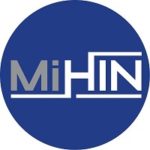 Michigan Health Information Network Expands Its Network Throughout the State via Partnership with PointClickCare
Michigan Health Information Network Expands Its Network Throughout the State via Partnership with PointClickCare
The Michigan Health Information Network (@MiHIN), the nonprofit statewide health information network, announced that it is partnering with PointClickCare Technologies, the largest post-acute electronic medical record vendor in the country, to advance and deepen healthcare collaboration, care coordination, and interoperability by offering access to real‐time insights at any stage of a patient’s journey.
CyncHealth Fosters Tremendous Interoperability Expansion in NE Following LB411 Passing
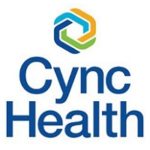 CyncHealth (@CyncHealth), the designated state-wide health information exchange (HIE) for Nebraska, and the administrator of the state’s Prescription Drug Monitoring Program (PDMP), partnered with Castlemark Consulting to usher in a period of incredible growth and development of interoperability in the region following the passage of Nebraska Legislative Bill 411 (LB411). LB411 facilitated near universal participation for the sharing of healthcare records amongst the states’ healthcare facilities with the statewide health information exchange, CyncHealth.
CyncHealth (@CyncHealth), the designated state-wide health information exchange (HIE) for Nebraska, and the administrator of the state’s Prescription Drug Monitoring Program (PDMP), partnered with Castlemark Consulting to usher in a period of incredible growth and development of interoperability in the region following the passage of Nebraska Legislative Bill 411 (LB411). LB411 facilitated near universal participation for the sharing of healthcare records amongst the states’ healthcare facilities with the statewide health information exchange, CyncHealth.
Industry and Contract News
The Sequoia Project’s Information Blocking Compliance Workgroup Releases Final Versions of Five Industry-Focused Resources
The Sequoia Project (@sequoiaproject), a non-profit and trusted advocate for nationwide health information exchange, released the final version of the set of resources designed to help regulated entities better comply with the information blocking requirements of the 21st Century Cures Rule.
Zane Networks Chosen as Tech Partner for ACF-Funded CRISP Initiative
Zane Networks (@zanenetworks), a company in healthcare transformation services and solutions, was chosen as technology partner for CRISP (@crisphealth), the state-designated health information exchange (HIE) for Maryland and grantee for the Administration for Children and Families (ACF) Human Services Interoperability Innovations (HSII) cooperative agreement.
Ciox Health creates platform for providers to offer patients immediate access to their medical records
As the industry leader in compliant exchange of medical data, Ciox (@CioxHealth), a Datavant company, partners with health systems to efficiently deliver patient-requested electronic health information (EHI) – a core requirement of the 21st Century Cures Act. To help healthcare providers comply with the 21st Century Cures Act by providing patients with easier, faster access to their medical records, Ciox has expanded Patient Request, an application that enables patients to request their records from anywhere, anytime.
SSG Introduces Enhanced Health Information Exchange (HIE) Solutions to Support Efficient Communication Between Public Health Agencies
Strategic Solutions Group (@ssgph1), which has provided technology services and solutions to public health departments throughout the United States for nearly two decades, announced an initiative to help agencies overcome the “data gap” by replacing legacy technology platforms and paper-based systems with Health Information Exchange (HIE) solutions that allow them to appropriately access and securely share a patient’s medical information electronically from other jurisdictions — or even in their own communities — to help them create faster and better responses to public health situations.
Legislation introduced on requiring the FDA to study medical device data interoperability
On September 29, 2022, Representatives Miller-Meeks, O’Halleran, and Murphy introduced legislation requiring the Foodand Drug Administration (FDA) to conduct a study and issue recommendations on improving medical device data interoperability. Morgan Reed, executive director of the Connected Health Initiative (@HealthIsMobile), expressed CHI’s support for the bill.
Hires and Openings
Craig Behm named President and CEO for CRISP and CRISP Shared Services
CRISP (@CRISPhealth), the nonprofit state-designated health information exchange (HIE), has named Craig Behm President and CEO for CRISP and CRISP Shared Services. Behm, who has been instrumental in the success of HIE efforts throughout Maryland and the region, plans to expand partner and affiliate collaborations to advocate for local, industry-led solutions to interoperability and removal of public health obstacles. CRISP and its affiliate HIEs will continue to build on strong relationships with providers, Medicaid and health departments, community organizations and other HIEs.
UHIN Welcomes Inaugural Chief Data Officer
Navina Forsythe, MPA, Ph.D., has joined UHIN (@UHINhealth), a nationwide leader in interoperability, as the company’s first Chief Data Officer as of September 19th. She most recently served as Director of the Center for Health Data and Informatics at the Utah Department of Health.
Former Executive Director of Carequality Dave Cassel Joins Health Gorilla as SVP of Customer Success
Health Gorilla (@healthgorilla), a Health Information Network and interoperability provider, announced that Dave Cassel, former Executive Director of Carequality, has joined the company as Senior Vice President of Customer Success and Operations.
Civitas is Hiring!
Content and Dissemination Specialist – This is a full-time specialist-level position to support curation, development, and dissemination of content to our Network members and partners. The ideal candidate will have experience with content creation and design, and is comfortable utilizing programs for web, print, social media, and multimedia. The Content and Dissemination Specialist should also be passionate about relationship building, possess good judgment, and be adaptable and self-aware.
Interoperability Market
According to Allied Market Research, the healthcare interoperability solutions market size was valued at $5,320.0 million in 2020, and is expected to reach $21,544.6 million by 2030, registering a CAGR of 14.9% from 2021 to 2030. Interoperability in healthcare refers to timely and secure access, integration and use of electronic health data so that it can be used to optimize health outcomes for individuals and populations. As populations around the world age and people live longer, interoperability and data sharing are going to become increasingly critical for delivering effective healthcare. Interoperability is the ability of two or more systems to exchange health information and use the information once it is received.
According to the report published by Fior Markets, the global healthcare data interoperability market is expected to grow from USD 2.83 billion in 2020 and to reach USD 5.80 billion by 2028, growing at a CAGR of 9.38% during the forecast period 2021-2028. The primary reasons driving healthcare interoperability market growth include a growing focus on patient care, a growing need to tighten healthcare costs, and government measures to improve patient experience of treatment. System interoperability, information interchange, and data availability are all important factors in improving health outcomes. Individual health data is mobilized throughout the whole range of care providers in health organizations, enabling coordinated, safe, and high-quality treatment that supports payment reforms, transparency efforts, and individuals’ ability to control their health.
ONC's Cures Act Final Rule
In May of 2020 the 21st Century Cures Act: Interoperability, Information Blocking, and the ONC Health IT Certification Program released by the ONC and published in the Federal Register. Here is a quick timeline.
Certification
- 6/30/20 – General Effective Date
- 4/5/21 – Compliance requirements start for information blocking, assurance, and API
- 4/5/21 – HIT developers prohibited from restricting certain communications
- 12/15/21 – Submit initial real world testing plans
- 4/1/22 – 1st attestation to conditions of Cert required
- 12/31/22 – New HL7 FHIR API capability and other update criteria must be made available
- 3/15/23 – Submit initial real world testing results
- 12/31/23 – EHI export capability must be made available
The TEFCA Players
ONC Recognized Coordinating Entity (RCE)
 The Recognized Coordinating Entity (RCE) is responsible for developing, implementing, and maintaining the Common Agreement component of the Trusted Exchange Framework and Common Agreement (TEFCA). The Common Agreement is the baseline technical and legal requirements for health information networks to share electronic health information and is part of the 21st Century Cures Act (Cures Act).
The Recognized Coordinating Entity (RCE) is responsible for developing, implementing, and maintaining the Common Agreement component of the Trusted Exchange Framework and Common Agreement (TEFCA). The Common Agreement is the baseline technical and legal requirements for health information networks to share electronic health information and is part of the 21st Century Cures Act (Cures Act).
In addition they will collaborate with ONC to designate and monitor Qualified Health Information Networks (QHIN), modify and update an accompanying QHIN Technical Framework, engage with stakeholders through virtual public listening sessions, adjudicate noncompliance with the Common Agreement, and propose sustainability strategies to support TEFCA beyond the cooperative agreement’s period of performance.
2022 TEFCA Timeline
Q1 of 2022
- Publish Common Agreement Version 1
- Publish QHIN Technical Framework (QTF) – Version 1 and FHIR Roadmap
- Initiate work to enable FHIR-based exchange
- Public education and engagement
Q2 of 2022
- QHINs begin signing Common Agreement and applying for designation
Q3 and Q4 of 2022
- Onboarding of initial QHINs
- Additional QHIN applications processed
- RCE establishes Transitional Council
- RCE begins designating QHINs to share data
- Prepare for TEFCA FHIR exchange pilots
Qualified Health Information Networks (QHIN)
To apply for QHIN Designation, a Health Information Network (HIN) must meet certain prerequisites, including already operating a network that provides the ability to locate and transmit EHI between multiple persons or entities electronically, with existing persons or entities exchanging EHI in a live clinical environment; and providing the RCE with a written plan of how it will achieve all of the requirements of the Common Agreement within a specified time period.
As of October 3, 2022 QHIN Application is open.
QHIN Application, Onboarding, and Designation Phases – The prospective QHIN Application, Onboarding, and Designation process has been divided into a series of five phases. See the phases.

